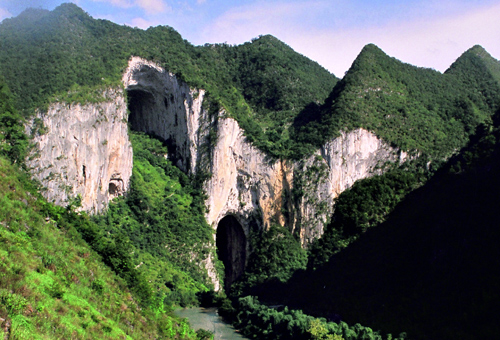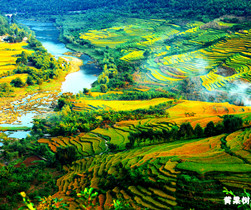Home> Attractions
Getu River
(chinadaily.com.cn)
Updated: 2014-12-10

The Miao singer Donglang practiced a free-climbing stunt as they carry the decedent for burial in cliffs along the river.
The stunt has been handed down from generation to generation for more than a thousand years, so the Miao ethnic group could climb the extremely tall cliff of thousands of feet without any protection facilities.
The Millennial Hanging Coffins in Cave Burial
The cliffs along both sides of the Getu River are home to the hanging coffins of the Miao people. Hundreds of thousands of ancient coffins are placed in the caves on the cliffs. The hanging coffins were buried in caves and survived more than 1,000 years of natural catastrophes.
The last cave tribe
Zhongdongqianfudong village is considered the mountain's eyes. It is located on the hillside of a large mountain near a river. The cave is vast and spacious with a Miao village established inside. The village can accommodate more than 1,000 people and hundreds of topless wooden houses. A school was built around the cave. For generations, Miao people were born, lived and buried in the nearby cave. They are known as the last cave tribe in the world.
Visions of Miao people
On both banks along the Getu River stretching dozens of kilometers, 15 tribes of Miao people with different languages, dresses and customs live together. As the local Miao people have been inheriting tribal language and customs for more than 1,000 years, they have become living fossils for Miao evolution and succession.
The ancient river on the mountain top
On a 1,200-meter-high mountain top, visitors can see the ancient river cutting a large hole through the mountain like a heavenly gate.
The earth loophole
Rushing water has carved out the world's deepest giant shaft, the Tiankeng-Xiangshui Hole, in the central mountains. The hole is called the "earth loophole" due to its great size and extreme depth.
Miao Village in Underground Palace
At the base of the mountain, the water from the Getu River and underground water from all directions work together to dig out the world's second largest cave hall. With a flat area of 150,000 square meters, the large underground space is called the earth's shell.

